The yield curve is flattening in a big way. The spread between the 5 and 30 year treasury bonds is 168 basis points, compared to 250 last November. We have been expecting a flatter yield curve –it is an important sign of normalization. But investors seem to have been caught off guard by the strength of long term bonds. Treasuries with maturities of 20+ years have been among the best performers in the market, generating over 11% returns year-to-date. Not too shabby, especially given that rates are supposed to be moving higher.
Of course, rates will be moving higher – the Federal Reserve has made that perfectly clear. But not quite yet, and they’re only talking about short term rates. So the curve that is taking shape is significantly flatter, and at least right now it looks like higher rates will mostly be felt inside of 5 years. The long end tells a very different story, and for Credit, the story unfolding suggests a pretty benign, if uninspiring outlook. Looking back to the last credit cycle, when the curve finally started to flatten, credit spreads largely moved sideways for several years, in a range of about 10 basis points.
Looking at the past week, spreads were a little tighter, and for the month of April, generated positive excess returns of 41 basis points. The long end outperformed strongly, with total return for the month of 2.24%, and 62 basis points of excess return. Supply for the week came in at $32 billion, driven by the Apple deal. The market had been anticipating this deal following Apple’s announcement on April 23rd that it would be issuing bonds to fund share buybacks, but the deal was much smaller than expected – just $12 billion instead of $20 or more. The deal was well received (with the exception of the 10 year – the only tranche that moved wider on the break) and spreads for existing Apple bonds tightened.
The market as a whole right now has a complacency that leaves us wondering what else is going on out there. It feels a lot like middle age – reviewing where we’ve been, wondering if we’ve done enough, and when it all falls apart. The signs of middle age for the market are definitely there – a flatter yield curve, modest movement in credit spreads, modest economic growth. Now I guess we’re just waiting for someone, somewhere in the market to push things a little too far. It always seems to happen in middle age. The risk is greatest when we are no longer content with moving sideways.





